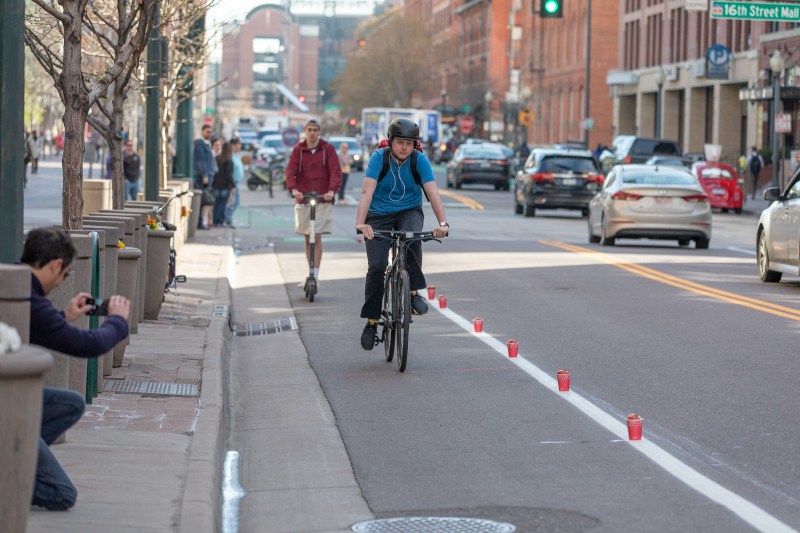Here’s Why Denver is Counting Bike Traffic (Because Fox 31 Got It Wrong)

This morning’s Streetsblog Denver Headlines included a story from the local Fox affiliate titled: “Denver surveying downtown bike lanes to make sure it’s a ‘return on investment.’”
The story claimed incorrectly that the city installed traffic counters on several bikeways “to make sure people are using these bike lanes enough to justify the price.” She said the study would determine if bike lanes are “worth the investment.” And without citing bike advocates, city officials or facts, reporter Emily Allen described protected bike lanes as “significantly more expensive to [install] than traditional bike lanes.”
But officials in the Department of Public Works will use the information to develop more protected bike lanes, not less. And the study is not about return on investment.
“We’re not using bike counts to justify cost,” wrote Heather Burke, a spokesperson for the department, in an email. “If we find certain bike lanes are highly traveled (such as high comfort bikeways), then we’ll consider installing more of those types of bikeways around the city.”
But in a city marked with a disjointed and incoherent bike map, and plans to expand it that are inadequate but controversial, the claim struck some bike advocates as believable.
“The announcement that Denver is going to study its ROI on the money it [has] spent on bike lanes is a slap in the face as it comes on the heels of a death of a cyclist just 10 days ago,” tweeted Brad Evans.
The city’s bike counts, which are part of the Denver’s first multi-year study that will track bike traffic in the same places during the same time of year, will steer urban planners.
“These are the first consistent annual bike counts DPW will be conducting at the same locations,” said Burke. “We’re trying to understand where, how often, and when people are riding to help guide us as we build out the bike network.”
Jack Todd, of Bicycle Colorado, sees that as a good thing.
“If they see that people are using these bike lanes in numbers that they might not have suspected, it’s just backup for what they want to do,” he said. “Which is adding more bike lanes.”
The study uses tubes on the ground or video to track the number of bikes that travel in and out of downtown. The city has placed them at 25 locations around the city this summer, and nine are currently counting bike traffic downtown.
“The purpose of the bike tube counters is to baseline our numbers this summer,” said Burke. “Then, we’ll come out again next year and the year after, so we can start to identify trends and changes in riding.”
But one bike advocate worried that bike traffic counts would not show true demand for better bike infrastructure downtown, because getting there isn’t easy enough for many would-be riders.
“To track the traffic on high comfort bike lanes downtown when there are no high comfort bike lanes going to the neighborhoods around downtown is like being surprised that no one in Denver flies into the Colorado Springs airport,” Allen Cowgill tweeted. “It’s not easy to get there in the first place.”
Fox 31 reporter Emily Allen did not respond to a request for comment.
Better walking. Better biking. Better transit. Support the nonprofit mission of Streetsblog Denver. Give $5 per month.


